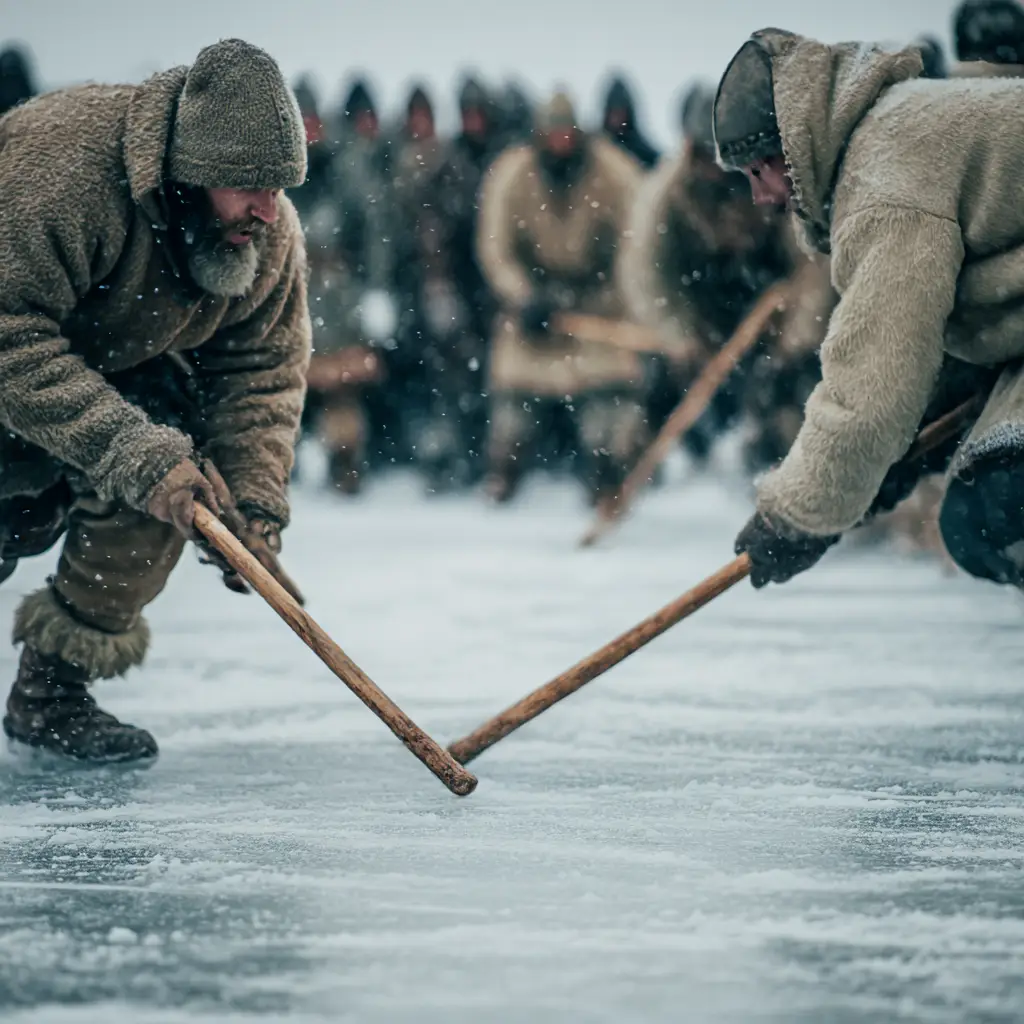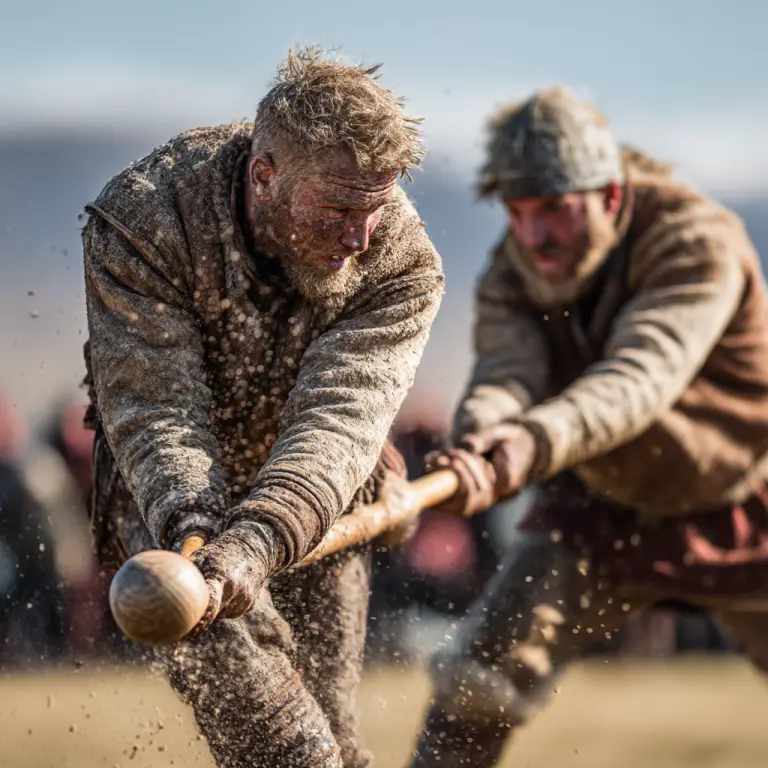Knattleik is a traditional Icelandic ball game with roots tracing back to the Viking Age. It was a popular sport among Norse communities and is considered one of the oldest known ball games in Northern Europe. The name “Knattleik” roughly translates to “ball game” in Old Norse, reflecting its straightforward yet vigorous nature.
The game was typically played outdoors on a rectangular field, often on uneven ground or frozen lakes during winter. Players were divided into two teams, and the objective was to strike a small wooden ball with a stick, aiming to score points by hitting designated targets or getting the ball past the opposing team’s defence. The sticks used in Knattleik resembled modern-day hurleys or lacrosse sticks but were often simpler and crafted from available wood.
Knattleik was known for its physical intensity and required a combination of speed, strength, and skill. Matches could be rough, with players often colliding and grappling, making it as much a test of endurance as of technique. The game served not only as entertainment but also as training for combat readiness, helping warriors develop coordination, agility, and competitive spirit.
While Knattleik gradually declined in popularity with the introduction of other sports over the centuries, its historical significance remains strong in Icelandic culture. Today, the game is occasionally revived in festivals or historical reenactments, celebrating Iceland’s rich Viking heritage and traditional sports.
Understanding Knattleik provides insight into the social and recreational life of Viking Age Scandinavia. It reflects how communities valued physical prowess and teamwork, integrating sport with everyday life and warrior culture. The legacy of Knattleik contributes to the broader appreciation of medieval Nordic games and their influence on modern sports.

